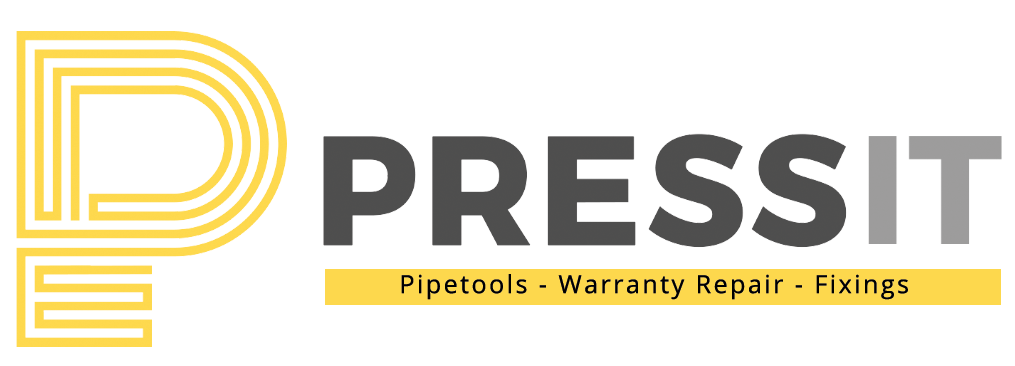Rothenberger press tools are widely acclaimed for their efficiency and reliability in various industries. From plumbing and HVAC to mechanical engineering, these tools play a crucial role in ensuring precision and effectiveness in jointing operations. To get the most out of your Rothenberger press tools and prolong their lifespan, proper maintenance is essential. In this blog, we will explore the best practices for maintaining these valuable assets and optimising their performance.
Skip the Reading and Order Rothenber Press Tool>>
Understanding Rothenberger Press Tools
Before delving into maintenance practices, let's take a moment to understand what Rothenberger press tools are all about. These tools are designed to provide a quick and secure method of joining pipes and fittings. They utilise a hydraulic mechanism to create strong and leak-proof connections, ensuring that critical systems operate smoothly. With various models available for different applications, Rothenberger press tools have become an industry standard for professionals who demand top-notch results.
Importance of Maintenance
Maintaining your Rothenberger press tools is not just a matter of routine; it significantly impacts their performance and longevity. Regular maintenance offers several advantages, including:
- Ensuring Longevity and Durability: By keeping your press tools in optimal condition, you can expect them to serve you for years without compromising on quality.
- Minimising Downtime and Costly Repairs: Regular maintenance prevents unexpected breakdowns, reducing downtime and avoiding expensive repairs.
- Maintaining Safety Standards: Well-maintained press tools contribute to a safer working environment, protecting both the operator and the equipment.
Regular Cleaning and Lubrication
One of the fundamental maintenance practices for Rothenberger press tools is keeping them clean and well-lubricated. Cleaning the tools after each use helps remove debris and potential contaminants. Additionally, proper lubrication ensures smooth operation and minimises friction, which can lead to wear and tear. Use Rothenberger's recommended lubricants to optimise performance and prevent premature deterioration.
Inspecting for Wear and Damage
Regular inspections are critical for detecting any signs of wear and tear on your press tools. Look for worn-out parts, damaged components, or any issues that may affect the tools' functionality. Early detection allows you to address problems promptly and prevent further damage.
Calibration and Adjustment
To achieve accurate and consistent results, calibrating and adjusting your press tools are vital. Calibration ensures that the tools exert the correct pressure, maintaining the integrity of the connections. Proper adjustment enables you to use the tools for various pipe dimensions and fittings, expanding their versatility.
Storage and Handling
How you store and handle your press tools can impact their performance and lifespan. Store the tools in a dry and clean environment, protecting them from dust and moisture. When handling the tools, be gentle to avoid unnecessary stress on the components.
Safety Measures
Safety should always be a top priority when working with press tools. Ensure that operators wear appropriate safety gear, including gloves and eye protection. Proper training on tool operation and safety guidelines is essential for everyone involved.
Common Issues and Troubleshooting
Despite regular maintenance, press tools may encounter occasional issues. Common problems include leaks, incomplete joints, or difficulty in pressing. Troubleshoot these problems carefully and refer to the manufacturer's troubleshooting guide if necessary.
Upgrading and Replacing Parts
As technology advances, newer models of Rothenberger press tools may offer improved features and efficiency. Consider upgrading to newer versions if they align with your needs. Additionally, replace any worn-out or damaged parts promptly to maintain the tool's performance.
Best Practices for Specific Industries
Different industries have unique requirements when it comes to using press tools. Tailor your maintenance practices to suit the demands of your specific industry. For instance, plumbing applications may differ from those in mechanical engineering.
Ensuring Compliance with Manufacturer Recommendations
Rothenberger provides comprehensive guidelines for maintaining their press tools. Always follow their recommendations to avoid voiding warranties and ensure optimal performance.
Benefits of Professional Maintenance Services
While some maintenance tasks can be handled in-house, enlisting professional maintenance services can offer added benefits. Expert technicians can perform in-depth inspections, identify potential issues, and offer specialised solutions, leading to long-term cost savings and improved efficiency.
Educating Users and Staff
Ensure that all users and staff members are well-trained in operating and maintaining the press tools. Educating them about best practices creates a proactive maintenance culture and enhances tool performance.
Conclusion
Maintaining your Rothenberger press tools is a key factor in maximising their lifespan and performance. Regular cleaning, lubrication, inspection, calibration, and adherence to safety measures are essential practices. By following the manufacturer's guidelines and considering industry-specific requirements, you can ensure the tools consistently deliver top-notch results. Remember, a well-maintained Rothenberger press tool is an asset that will benefit your business for years to come.
FAQs
- How often should I clean my Rothenberger press tool? Cleaning the press tool after each use is ideal to prevent debris buildup and contamination.
- What should I do if my press tool is leaking during operation? Check for any damaged seals or fittings and replace them as necessary.
- Is it necessary to calibrate the press tool regularly? Yes, regular calibration ensures accurate and consistent jointing.
- Can I use press tools for different pipe sizes? Yes, by adjusting the tool settings, you can use it for various pipe dimensions and fittings.
